AI Pest Control: What Gardeners Need to Know

AI pest control is changing how gardeners manage pests. It uses tools like image recognition, weather data, and sensors to detect and predict problems early. This approach helps reduce pesticide use, protect helpful insects, and save time and money. Here's what you need to know:
- How It Works: AI analyzes images and environmental data to identify pests and recommend treatments.
- Key Benefits: Early detection, precise treatments, reduced chemical use, and cost savings.
- Tools: Apps, smart traps, and platforms like AIGardenPlanner offer pest alerts and eco-friendly solutions.
- Challenges: High initial costs, tech setup, and occasional false alerts.
AI won't replace hands-on gardening but can complement it by providing accurate, data-driven insights. Start small with an app or smart tool and combine it with your gardening knowledge for the best results.
AI Garden Pest Identifier - Solve Your Pest Problem Instantly!

How AI Pest Detection and Monitoring Works
AI pest control technology is transforming the way gardeners and farmers manage pest problems. These systems combine advanced algorithms with cutting-edge sensors to deliver accurate, real-time pest detection. Let’s break down the core technologies that make this possible.
Core Technologies Behind AI Pest Control
At the heart of these systems is computer vision, which analyzes digital images to detect patterns, shapes, and features that differentiate pests from helpful insects or plant diseases. The process starts with high-quality image capture from the garden.
Next, machine learning algorithms take over. These algorithms compare the captured images against massive databases containing thousands of examples of pests and plant diseases. Using neural networks, they can spot subtle differences between similar-looking insects or even distinguish pest damage from nutrient deficiencies.
Adding another layer of precision are environmental sensors. These devices track factors like temperature, humidity, soil moisture, and light levels - all of which influence pest behaviors and reproduction. When paired with image analysis, this data allows AI systems to predict where and when pest issues are likely to arise.
IoT connectivity ties everything together, enabling communication between sensors, cameras, and gardeners’ devices like smartphones or computers. This ensures continuous monitoring, even when gardeners aren’t physically present.
Real-Time Pest Identification
AI systems are impressively fast, often identifying pests in under 30 seconds. They process multiple data points simultaneously to ensure accurate results. The identification process kicks off when cameras detect movement or when gardeners upload images via mobile apps.
Some systems go further with movement and thermal imaging analyses, which identify insects based on their behavior and heat signatures. This is especially helpful for detecting nocturnal pests, which are often most active at night.
Emerging tools like sound recognition technology are also making waves. Many insects produce distinct wing-beat frequencies or movement sounds, and AI systems trained on these audio patterns can identify specific species.
To ensure reliability, these systems use a confidence scoring system. Identifications with scores above 85% are considered highly reliable, while lower scores may require additional verification or images.
Integration with Smart Garden Systems
AI pest control becomes even more effective when paired with smart garden management tools. For example, automated irrigation systems can adjust watering schedules based on pest activity, as overwatering often creates ideal conditions for pests and diseases.
In controlled environments like greenhouses, climate control systems can tweak temperature and humidity levels to make conditions less favorable for pests. If early signs of fungal diseases are detected, the system might lower humidity and improve air circulation.
Smart lighting systems offer another way to disrupt pest life cycles. Some AI platforms work with LED grow lights to adjust light spectrums or timing, interfering with pest reproduction or feeding behaviors.
For targeted treatment, automated dispensers apply pest control solutions only where needed, minimizing chemical use while maintaining effectiveness.
AI also integrates seamlessly with tools like AIGardenPlanner, which combines pest monitoring with garden design. This platform uses AI to analyze your location and climate data, predicting which pests are most likely to impact your garden and suggesting plant layouts to naturally deter them.
Data logging and trend analysis provide long-term insights, helping gardeners track pest populations, identify seasonal trends, and predict future outbreaks based on weather patterns and historical data.
Finally, mobile notifications and alerts keep gardeners informed in real time. These alerts include specific treatment recommendations tailored to the identified pest species, current weather conditions, and the unique characteristics of the garden. This ensures gardeners can act swiftly and effectively to protect their plants.
Benefits of AI in Garden Pest Control
AI is changing the way we approach garden pest control, offering smarter detection, reducing environmental harm, and boosting efficiency.
Early and Accurate Pest Detection
One of the standout advantages of AI in pest control is its ability to detect problems early. Traditional methods often rely on visual inspections, which usually catch infestations only after pests have caused noticeable damage. AI, on the other hand, works around the clock, spotting pest activity when it's still in the early stages and easier to manage.
Identifying pests can be tricky, especially when some beneficial insects look a lot like harmful ones. AI systems, trained on massive datasets, can distinguish between a helpful ladybug and a harmful cucumber beetle with impressive precision. This ensures that beneficial insects are protected while harmful ones are dealt with quickly. AI also excels at spotting subtle signs of trouble - like slight changes in plant color or unusual insect behavior - that might go unnoticed by the human eye. This level of detail not only helps protect your garden but also has a positive ripple effect on both the environment and your wallet.
Reduced Chemical Use and Environmental Impact
AI-driven pest control is a game-changer when it comes to cutting back on chemical pesticide use. Traditional methods often involve spraying entire garden areas, even when pests are confined to small zones. AI allows for pinpoint treatments, applying solutions only where they're needed and in the right amounts.
This precision also helps preserve beneficial insects, like bees and butterflies, which are essential for a healthy garden ecosystem. AI systems can even factor in pest life cycles, weather conditions, and plant growth stages to recommend the most effective treatment times. This smarter approach not only improves pest control results but also minimizes the overall use of chemicals, leading to healthier soil and cleaner water by reducing the risk of contamination. These environmental benefits also translate into cost savings, making AI pest control a win-win for gardeners.
Cost and Time Savings
The efficiency of AI doesn’t just stop at sustainability - it also saves time and money. Automated monitoring eliminates the need for constant manual inspections, and its precision reduces spending on pest control products by targeting treatments only where necessary.
By catching infestations early, AI systems can prevent the costly interventions required for severe outbreaks. A small, targeted treatment for newly detected pests is far less expensive than dealing with a full-blown infestation later.
AI also boosts labor efficiency by monitoring large garden spaces simultaneously, something that would take hours to accomplish manually. Over time, the data collected by these systems provides valuable insights into local pest trends, helping gardeners plan better for future seasons. Whether it’s choosing pest-resistant plants or timing plantings more effectively, these insights lead to smarter gardening decisions.
Additionally, AI reduces crop loss, whether you're growing vegetables or ornamental plants. This can make the difference between a successful harvest and a disappointing season. When paired with tools like AIGardenPlanner, AI pest control not only protects plants but also helps design more resilient and productive gardens, combining pest management with smarter planning for a thriving garden space.
🚀 Ready to Reinvent Your Garden?
Join thousands of homeowners who have transformed their gardens using our AI design tool. Upload one photo to explore endless possibilities.
Get your AI garden designs →Practical Applications of AI-Powered Pest Control Tools
AI-powered tools are transforming pest control, making advanced techniques more accessible to gardeners everywhere. With these innovations, managing pests has become not only smarter but also more efficient.
AI Tools for Home and Community Gardens
One of the standout tools in AI-driven pest control is smart traps. Unlike traditional sticky traps that require constant checking, these devices use computer vision to identify and count pests automatically. They send real-time updates straight to your smartphone, providing detailed insights into pest populations over time - no manual labor required.
Integrated sensors are another game-changer. These systems monitor environmental factors like temperature, humidity, soil moisture, and pest activity. When conditions are ripe for a pest outbreak, the system sends an alert, allowing gardeners to act before the problem escalates.
Camera-based identification tools have also reached impressive levels of accuracy. Many can distinguish between harmful pests and beneficial insects in real-time. AI-powered mobile apps take this a step further - just snap a photo of an insect or plant damage, and the app provides an instant diagnosis. It’s like having a professional entomologist in your pocket.
One tool that brings all these features together is AIGardenPlanner, which combines pest control with garden design for a seamless experience.
Using AIGardenPlanner for Pest Control Integration
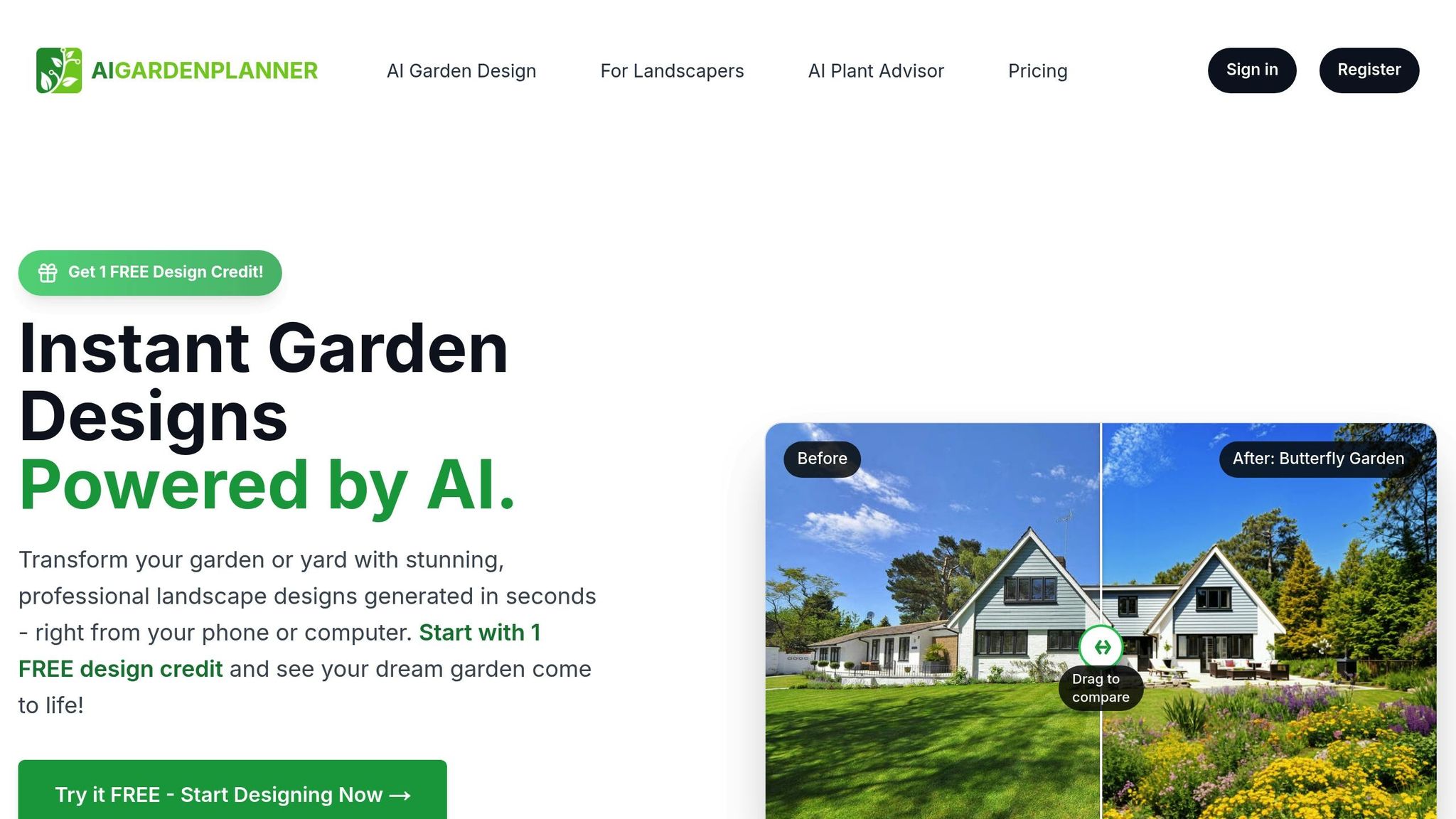
AIGardenPlanner goes beyond traditional garden planning by incorporating pest management into its features. Upload a photo of your garden, and its AI Plant Advisor analyzes factors like your local climate, soil conditions, and design preferences. Based on this, it suggests plants that thrive in your specific environment, reducing the chances of pest problems by promoting healthy growth.
The platform also helps you design gardens that foster natural ecosystems, which can enhance resilience against pests. By creating a balanced outdoor environment, you’re setting the stage for a garden that’s both beautiful and pest-resistant.
Alerts and Treatment Recommendations
Modern AI pest control systems shine when it comes to timely alerts and actionable recommendations. By analyzing pest life cycles and weather patterns, these systems notify gardeners when to intervene for the best results.
What’s more, they prioritize eco-friendly solutions. Built-in protocols suggest starting with gentle measures - like physical removal or organic treatments - before escalating to stronger options if necessary. These systems also track how effective treatments are, using the data to fine-tune future recommendations. By factoring in real-time weather and environmental data, they ensure interventions are both effective and minimally disruptive to the surrounding ecosystem.
With these tools, gardeners can stay one step ahead of pests while maintaining a healthy, thriving garden.
sbb-itb-4d6a8dd
Challenges and Considerations for Adopting AI Pest Control
AI pest control offers plenty of advantages, but it also comes with its own set of hurdles. Being aware of these challenges from the start can help you make better decisions and set realistic expectations.
Common Challenges in AI Pest Control
Initial Investment
The cost of getting started can be a major barrier. Advanced AI systems, such as smart traps and monitoring solutions, often come with hefty price tags. For larger or community gardens, this financial commitment can feel overwhelming.
Technical Complexity
AI pest control systems often depend on stable Wi‑Fi, user-friendly smartphone apps, and consistent software updates. For gardeners who aren't tech-savvy, setting up, calibrating, or troubleshooting these systems can be frustrating.
Data Privacy Concerns
These tools often gather a lot of information - photos of your garden, location details, and activity patterns of pests. Understandably, some users are wary about how this data might be stored, used, or shared.
Maintenance Needs
Keeping these systems running smoothly requires effort. Tasks like cleaning camera lenses, replacing sensor batteries, and updating software are essential but can disrupt functionality temporarily. Plus, extreme weather - be it heavy rain, high heat, or freezing temperatures - can impact performance.
False Alerts and Missed Detections
No system is perfect. Wind-blown leaves might trigger unnecessary alerts, while poor lighting or fast-moving insects can cause the system to miss actual pests. These inaccuracies can be frustrating for users.
Understanding these challenges is key to grasping how AI systems may fall short, especially when it comes to identifying rare pests.
Limitations of AI in Identifying Rare Pests
While AI excels at spotting common garden pests like aphids, caterpillars, and spider mites, it struggles with rarer or newly emerging threats. Here's why:
Training Data Gaps
AI systems rely on large libraries of pest images for training. If the system hasn’t been trained on a specific pest, it might not recognize it. This can leave uncommon or invasive pests undetected until the software is updated.
Regional Differences
Pests can look different depending on where they’re found. An AI system trained on pests from one region might misidentify the same species when it appears under different environmental conditions.
New and Emerging Pests
AI systems can lag behind when new invasive species or pests adapting to climate changes appear. By the time the system is updated to recognize them, the damage to gardens may already be done.
Complex Interactions
When multiple pests attack a plant at once, or when beneficial insects are mixed in with harmful ones, AI systems can have trouble providing accurate assessments or giving effective treatment recommendations.
Tips for Responsible Use of AI Pest Control
To make the most of AI pest control, it's important to use it wisely. Here are some practical strategies:
- Combine AI with manual inspections: Don’t rely solely on automated systems - regularly check your garden yourself.
- Choose quality equipment: Go for systems from reputable brands that offer good support and frequent updates.
- Keep traditional resources handy: Field guides and local extension services can be invaluable when AI results are unclear.
- Calibrate for your garden: Adjust camera positions, sensor settings, and alert thresholds to suit your specific environment.
- Learn about pests: A basic understanding of pest biology can help you assess AI recommendations more effectively.
- Maintain your system: Clean lenses, check batteries, and update software regularly to keep things running smoothly.
- Track your results: Document which AI recommendations work best in your garden to refine your approach over time.
- Connect with local gardeners: Local gardening communities can alert you to emerging pest issues before your AI system does.
Conclusion
AI-powered pest control is reshaping how gardeners protect their plants. Instead of relying solely on reactive methods, this technology introduces proactive, data-driven strategies that identify and address potential threats before they cause significant harm. While there may be some upfront costs and a learning curve, the long-term advantages often outweigh these initial hurdles.
Rather than replacing the intuition and experience of seasoned gardeners, AI complements it by offering precise, real-time insights. When paired with traditional gardening practices and routine manual inspections, AI tools create an effective and environmentally conscious pest management system.
Key Takeaways
AI pest control brings several key benefits to the table:
- Early Detection: Spot pest issues before they escalate, preventing severe damage to plants.
- Targeted Treatments: Protect helpful insects and reduce chemical runoff by applying treatments only where needed.
- Cost Efficiency: Save money over time by cutting back on chemical use, reducing crop losses, and streamlining labor efforts.
That said, AI tools are not without limitations. They excel at identifying common pests and maintaining consistent monitoring but may falter when dealing with rare species or complex pest interactions. By combining AI with traditional methods, gardeners can create a more balanced and effective approach to pest control.
Next Steps for Gardeners
To get started with AI pest control, blend traditional practices with the precision of AI technology for a well-rounded defense against pests. Begin by evaluating your garden's specific pest challenges. Identify the pests that cause the most damage and the times of year they are most active. This information will help you choose the right AI tools for your needs.
- Start Small: Use budget-friendly apps that can identify pests using photos from your garden walks. As you grow more familiar with the technology, you can explore advanced monitoring systems for deeper insights.
- Design Smart Gardens: Platforms like AIGardenPlanner can help you design gardens that naturally deter pests. These tools recommend plant varieties and layouts suited to your local environment, creating spaces that are both functional and pest-resistant.
- Tap Into Local Knowledge: Connect with gardening groups or extension services in your area. Their insights into local pest behaviors can help you fine-tune your AI system and provide valuable context when technology alone isn’t enough.
Consistency is key to successful AI pest management. Regularly clean your equipment, update software, and review the data your system collects. Use these insights to adjust your approach each season, ensuring your garden stays one step ahead of pests.
FAQs
How can gardeners use AI pest control systems to improve their gardening practices?
AI pest control systems are changing the way gardening is done by offering quick pest detection and precise solutions. With tools like AI-powered cameras and image recognition, these systems can spot pests early, giving gardeners the chance to tackle problems before they spiral out of control. This means less reliance on broad chemical treatments and a healthier environment for your garden.
On top of that, these systems take into account factors like temperature, humidity, and soil conditions to suggest the most effective pest control methods and timing. Incorporating such technology into your gardening routine can help you manage pests more efficiently, ensuring healthier plants and better harvests.
How can gardeners manage the costs and technical hurdles of using AI pest control?
To keep expenses in check and tackle technical hurdles, gardeners can begin with affordable AI tools like smart pest monitoring systems. These tools not only cut down on manual work but also help minimize pesticide usage. Plus, many of them are scalable, meaning you can start small and expand gradually without a hefty initial investment.
Learning the ropes is just as crucial. Tapping into online guides, tutorials, and gardening forums can give gardeners a better grasp of how AI-driven pest control works. These resources can build confidence and make adopting new tech feel less daunting - and easier on the wallet in the long run.
How does AI identify harmful pests versus helpful insects, and what happens if it makes a mistake?
🎨 Visualize Your Dream Garden Today!
Transform any outdoor space into a professional landscape design in minutes. Just upload a photo, choose your style, and let our AI do the rest.
Start your garden transformation now →How AI Identifies Pests and Helpful Insects
AI uses cutting-edge image recognition and machine learning to tell harmful pests apart from helpful insects. By analyzing huge datasets, these systems learn to recognize physical features, behaviors, and patterns to pinpoint different species with impressive precision. This helps gardeners make smarter pest control choices while protecting vital insects like bees and ladybugs.
That said, no system is flawless. Mistakes can happen, and if beneficial insects are wrongly targeted, it could disrupt pollination or even harm the ecosystem. To tackle this, AI tools are regularly updated and fine-tuned to boost their accuracy. Gardeners can also double-check AI suggestions to ensure their pest control methods remain eco-friendly and sustainable.
Related posts
Related Articles
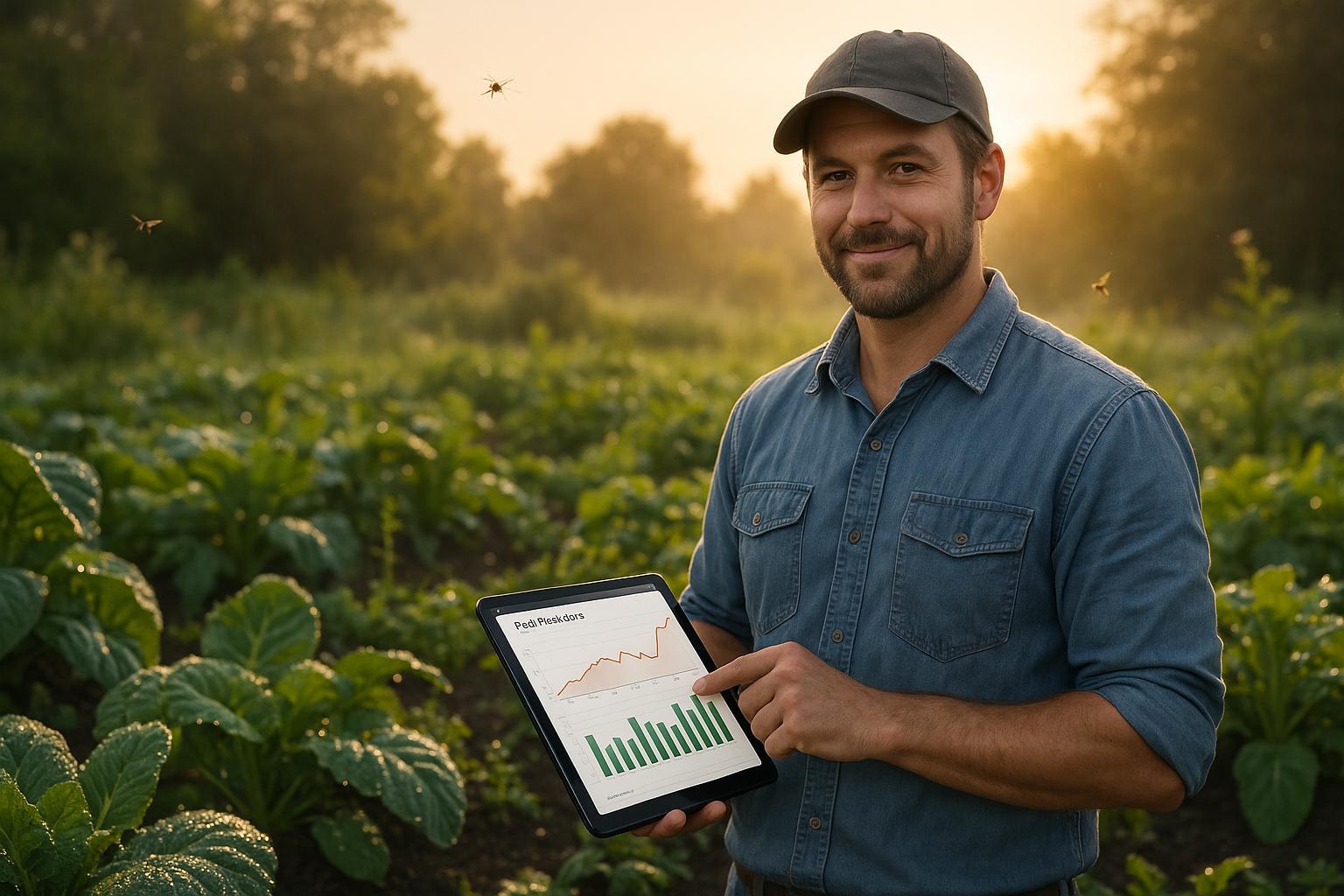
FAQs on AI Pest Prediction Models
Explore how AI pest prediction models revolutionize pest management, offering early detection, reduced pesticide use, and proactive gardening solutions.
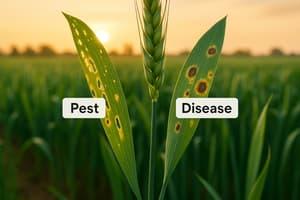
Pest vs. Disease: AI Detection Methods
Explore how AI distinguishes between pests and diseases in plants, enhancing detection methods for better garden and crop management.

AI and Edge Computing: Transforming Pest Management
Explore how AI and edge computing are revolutionizing pest management, boosting crop yields while minimizing pesticide use and costs.
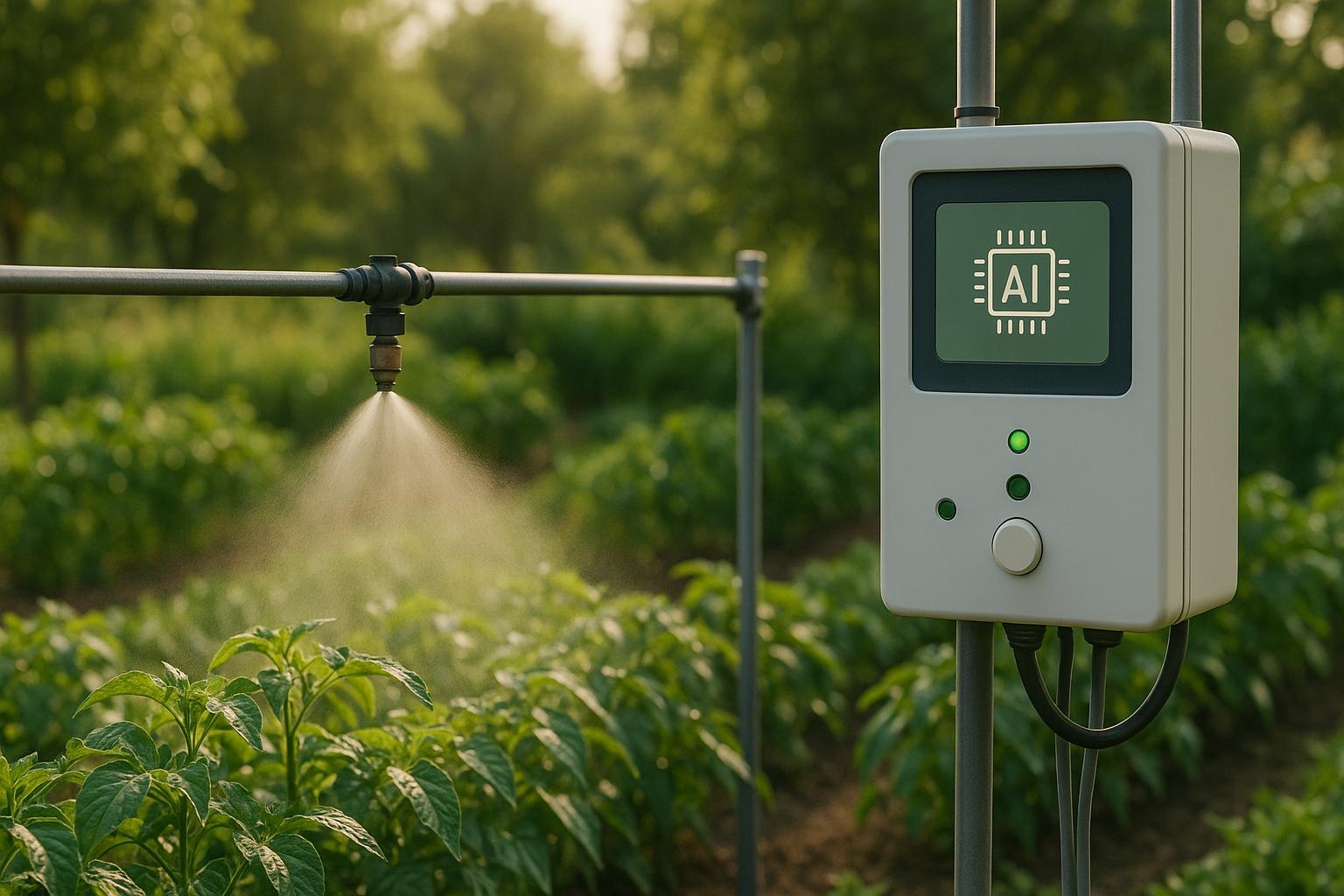
Checklist for Setting Up AI Spray Systems
Learn how to effectively set up and maintain AI spray systems for precise pest control in your garden, optimizing health and minimizing chemical use.

The Ultimate Guide to Hosting a Successful Garden Party
Discover how to plan and host a memorable garden party with tips on location, decorations, food, activities, and safety precautions.
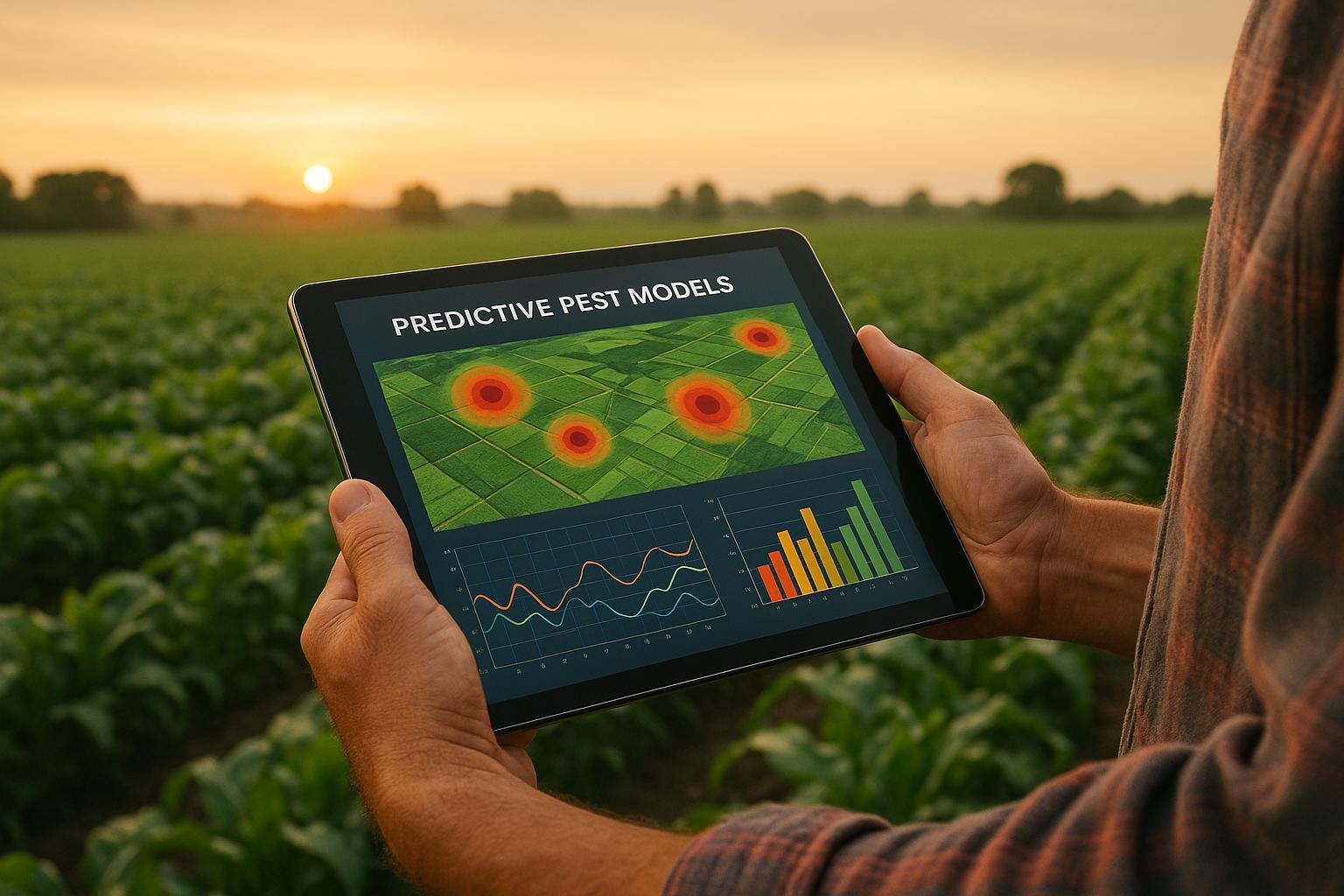
Predictive Pest Models: How They Work
Explore how predictive pest models harness data and AI to forecast infestations, reduce pesticide use, and enhance crop yields sustainably.